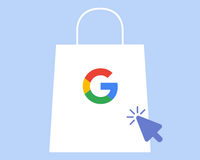By Slater Smith
Search engine optimization (SEO) is a diverse set of processes used to improve search engine rankings and increase online traffic. While there are industry-defined best SEO practices, most agencies have specific proprietary techniques which they use to improve rankings and brand awareness. In the following article, we discuss and answer the question: what is SEO. We also provide answers to other popular queries such as why is SEO important and how does SEO work?
What Is SEO?
SEO is the process of increasing the quality and quantity of organic traffic to a website domain or webpage. Organic traffic refers to visitors whereas quality traffic refers to visitors who find their way to the site in a more direct route. As the following image shows, successful SEO has many components, including keyword research, backlink accumulation, website design, and social media.
SEO is a broad term that can be broken down into three more specific categories: on page SEO, off page SEO, and technical SEO, each of which requires different strategies to be completed successfully.
On-Page SEO
On-page SEO is the practice of optimizing and editing web pages on a site in an attempt to rank higher on search engine results pages (SERPs). The most fundamental way to improve on-page SEO is to publish relevant, authoritative content that users will read. This content should include appropriate high volume keywords to increase the chances of ranking. As many SEO experts say, “content is king,” but there are also other on-page factors that can prevent even exceptional content from ranking.
Off-Page SEO
Off-page SEO is a less direct form of SEO that refers to modifications made outside of technical parameters or website content. The most common form of off-page SEO is backlink building, a process in which other websites link to your site, increasing its credibility and status. Search engines use backlink quantity and quality to determine the reputation and value of a site’s content. There are three main types of links, which differ in how they are accumulated and earned:
Natural links are acquired without any additional action on the part of the page owner. Many sites acquire natural links when content writers from other websites deem their content relevant and link to it in an article or page. Manual links are a form of backlinks acquired by deliberate link-building activities. This may include reaching out to content producers to ask if they can link to your content. Finally, self-created links are those created through the practice of adding links in your own online directories, blog articles, or pages. These backlinks, however, are generally viewed as less fruitful and reliable, and are therefore less popular.
What Is Technical SEO?
Search engines prefer websites and pages that meet certain technical criteria. For most websites, the first step toward improving technical SEO is structuring pages in an SEO-friendly way. In general, search algorithms give preference to site’s with “flat” structure, in which all pages are just a few links away from each other. This flat structure should also be consistent to allow users to easily understand where they are in the site and how to best navigate to other pages. Properly implemented technical SEO is essential to the performance and success of traditional SEO. Looking to start implementing technical SEO? Click here to learn more about technical SEO and how it works.
White Hat SEO Vs. Black Hat SEO
Not all SEO tactics are necessarily ethical or accepted by the industry. Black hat SEO tactics are those which seek to covertly use shady methods in an effort to rapidly increase rankings and online presence. Sustained use of black hat SEO is likely to hinder long term rankings and can even result in pages being completely wiped off Google search results. Popular black hat SEO tactics to watch out for include keyword stuffing, link farming, and sneaky redirects.
What Is Local SEO?
After years of analyzing the search patterns and behaviors of billions of users, Google determined that certain search engine users only seek results from their immediate. Furthermore, the algorithm learned that specific search terms like “best flower shop in LA” are only useful to people in a specific geographic area. A Dunkin Donuts in Manhattan may not be an appropriate search result for a mother in Cincinnati googling “popular donut store near me.”
This is where local SEO comes into play. Local SEO is a specific type of search engine optimization focused on increasing traffic for local search terms and results. Of the nearly 8.5 billion daily searches conducted on Google, an estimated 4 billion have local intent. Ranking in local SEO requires ranking in multiple indexes, including the Local Pack, Local Finder, Google Maps, and localized organic results.
Local Pack
The local pack appears at the top of the search engine results page for any local search. For a user searching “dentists in Austin Texas” the local pack might include a few of the highest-rated dentistry practices in Austin, as shown in the image below. The local pack features a select amount of organic results alongside a map showing where each ranking business is located.

The order of results in the local pack depends on the relevance to the search query, overall SEO performance, and relative location to the user.
Organic Search
Organic search occurs when Google determines that a user’s search has no local intent. Maybe the previous user who before thought about searching for sushi restaurants in Chicago has now decided that he’d rather make a meal at home, and instead searches “how to make homemade ravioli.” Businesses that have no specific location will want to show up in organic search because targeting a certain location may result in losing potential business from customers who do not live in that area.
How Do Search Engines Work?
Search engines are users' gateways to the entirety of the internet. They source billions of pages and sort through them to deliver users the information that is most relevant to their specific search term. To sift through and organize this unfathomable amount of information, search engines rely on processes known as crawling and indexing. Understanding the ways in which search engines work can help an agency or user best adapt to changes in user behavior, market performance, and the Google algorithm, which is estimated to shift its specifications about 400 times per year.
Crawling
Crawling is the process by which search engines discover and rediscover pages on the internet. Googlebot, the generic name for Google’s web crawler, begins the crawling process by working to find as many pages on the web as possible. These crawlers use links and backlinks to explore the entirety of a site.
Pages that are crawled, however, may not automatically appear in search results. In order to be found in a search query, a page must be both crawled and indexed. How often a page is crawled can vary greatly depending on domain authority, backlink quality, and other factors. More popular, established sites may be crawled every 3 days, while other lesser known pages may only see the Googlebot once every month.
Indexing
Some search engine users remember the days in which one had to flip through Yellow Pages to find an electrician or plumber. Before the book could be published, the editors of Yellow Pages had to index and organize the content of the book. In the modern age of the internet, indexing occurs continuously and instantaneously. Search engines use an inverted index to sort through information which contains all of the content in each page on the web, along with the location of each piece of content. Then, search engines engage in a process known as tokenization, which reduces words and pages to their core meaning to make them easier to track.
Search Results
When a user enters a search query, Google searches its index for matching pages and returns the results its algorithms determine to be the most relevant. Relevancy is decided by hundreds of factors, including search location, keyword usage, and backlink profile. The ordering of search results by relevance is known as ranking. Users can assume that the higher a page ranks, the more relevant its content is to a specific search query.
Why Is SEO Important?
SEO is fundamental to digital marketing because it allows businesses to exert influence over as many customers as possible. Online searches are often the primary source of online traffic for brands and companies. Increasing visibility and rankings in online searches can directly impact a company’s bottom line by increasing sales. Over the past decade, ranking on search engines has become increasingly more complex as search engines seek to give users the most direct answers to their search queries.
Rankings And Visibility
One of the central goals of any worthwhile SEO strategy is to increase keyword rankings and visibility. These elements make it easier for users to find a website when searching for a specific query. The higher your site ranks on search engine results pages (SERPs), the more likely prospective customers will see your page and click through to your site. Research has shown that pages that appear as the first search result on page 1 receive as many as 35% of click throughs from users. Furthermore, more than 95% of Google users do not move past the first page when viewing search results.
SEO Builds Authority
Page and site authority is increasingly important in a world in which users have a myriad of search results available to them. A high site authority score is a sign that Google has deemed a site trustworthy, relevant, and largely error-free. Site authority scores range from 1 to 100 and can be found using SEO tools such as Ahrefs, Moz, and SEMrush.
Creating A Better User Experience
When performed lackadaisical or incorrectly, SEO can deter users from visiting and revisiting your site. Most internet users naturally gravitate towards sites that load quickly, are easy to navigate, and direct them to the most important content first. After all, although SEO can be technical and complex, purchases, subscriptions, and other sources of revenue are ultimately initiated by decisions made by humans. Consumers expect a page to load as quickly as possible when visiting a website, and studies show that the average user spends less than 15 seconds on any specific page.
SEO Is A Long Term Strategy
Unlike short term marketing strategies that take advantage of holidays, events, and trends within the general public, effective SEO is implemented with a much larger time frame in mind. Well-designed and comprehensive SEO strategies can see significant results in just a few months, but where SEO really shines is long term strategy.
Many other marketing strategies like pay-per-click marketing stop seeing results after their initial campaign ends. This makes sense in the case of PPC marketing; if you stop funding ads, you aren't going to generate any more clicks or sales. On the other hand, SEO results build off each other, meaning search results grow exponentially over time. As the following chart shows, many SEO campaigns see significantly more success a year in than they do in their first few months.
Many SEO experts assert that dwell time—how long a page has remained on Google—is one of the most impactful ranking factors. Although this claim has yet to be verified, it is undeniable that dwell time does allow a page more opportunities to accumulate quality backlinks, populate content, and adjust to changes in rankings and the Google algorithm.
Takeaway
Search engine optimization (SEO) is an art and practice that requires time, attention, and constant updates to learn and master. Effective SEO campaigns may take more than a year to implement and can remain effective indefinitely if fueled by adequate funding and accurate research.
Without SEO, most businesses fail to reach online users, which account for more than 90% of retail customers. A proper, well-researched SEO campaign can exponentially increase revenue, build brand reputation, and help a business compete in the dynamic global marketplace.





